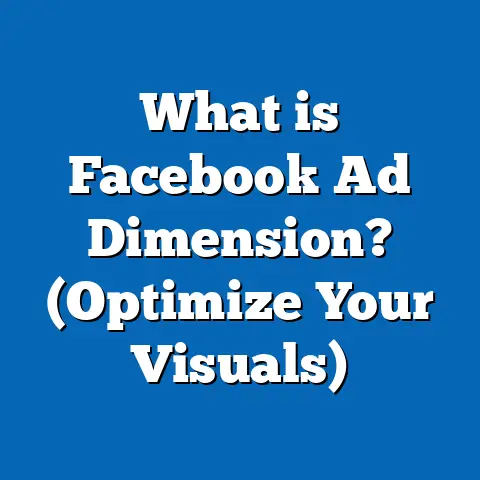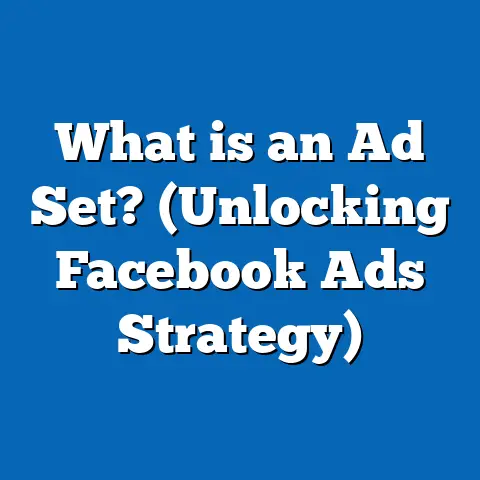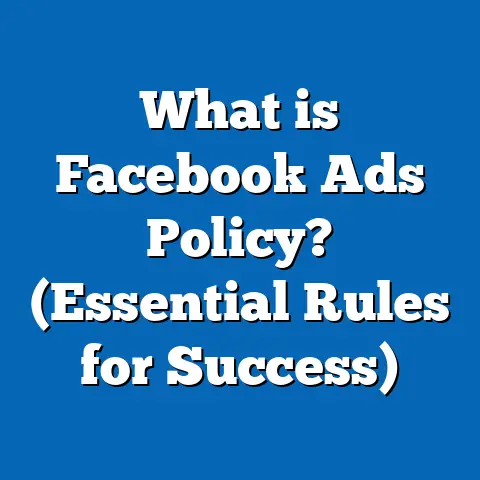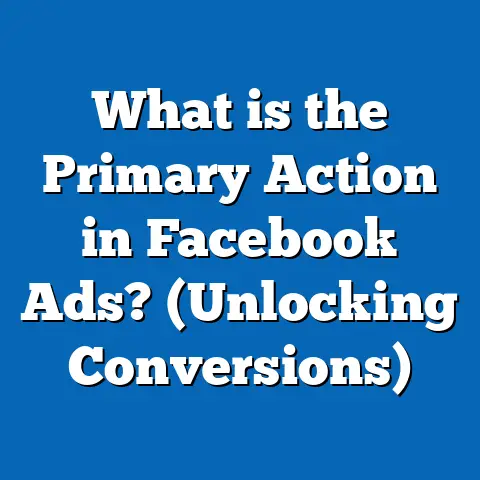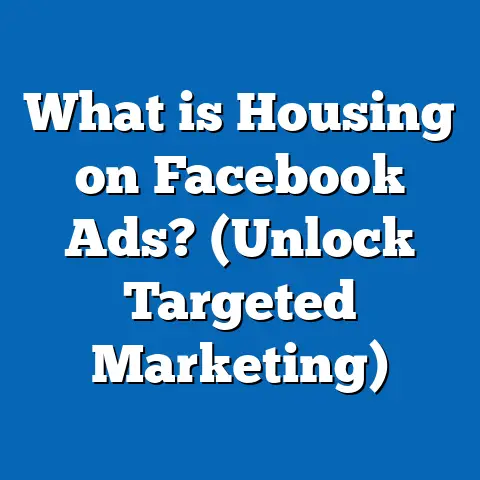What is an Angle in Facebook Ads? (Unlocking Ad Success)
Introduction: Turning Attention into Action—The Secret Power of Angles in Facebook Ads
Imagine spending thousands on Facebook ads, only to watch your campaign fizzle with lackluster results. The targeting is on point. The budget is healthy. But your message? It’s lost in the noise. The missing ingredient is often your ad angle—the unique perspective or hook that transforms ordinary ads into scroll-stopping, conversion-driving machines. In a hyper-competitive digital ecosystem, mastering the art of ad angles isn’t just a tactic; it’s a critical driver of profitability and brand growth. This guide reveals how to unlock ad success by understanding, developing, and deploying winning angles on Facebook.
What Is an Angle in Facebook Ads?
Defining “Ad Angle”
An ad angle is the specific approach, message, or perspective you use to frame your offer in a Facebook ad. It’s how you position a product or service to resonate with a particular segment of your audience. Think of it as the “storyline” or “hook” that makes your advertisement relevant and compelling.
- Example: For a fitness program, one ad angle could be “Lose weight fast for summer,” while another could be “Build confidence through strength training.”
Why Angles Matter
Angles differentiate your ads from competitors and connect emotionally with users. According to Meta’s own research, ads with a strong, clear message drive 23% higher conversion rates compared to generic messaging.
The Science Behind Effective Ad Angles
Understanding Human Psychology
Successful ad angles tap into psychological triggers:
- Fear of Missing Out (FOMO)
- Social Proof
- Aspirational Goals
- Pain Points and Solutions
A 2023 Nielsen study found that ads addressing a specific pain point had a 38% higher engagement rate on Facebook.
Data: Performance Impact of Angles
- Meta internal data (2024): Campaigns testing multiple ad angles saw up to 2.8x higher ROI compared to campaigns using a single, generic message.
- Wordstream analysis (2023): Split-testing different angles increased click-through rates (CTR) by an average of 27%.
The Mechanics: How Angles Work in Facebook Ads
Components of an Angle
- Target Audience Pain Point or Desire: What does your audience care about?
- Unique Value Proposition: Why is your solution different or better?
- Emotional Trigger: What emotion are you tapping into?
- Call to Action (CTA): What should the user do next?
Example: Mattress Company
| Angle | Hook Example | Target Outcome |
|---|---|---|
| Comfort & Sleep | “Wake up refreshed every morning” | Wellness seekers |
| Back Pain Solution | “Say goodbye to back pain at night” | Pain sufferers |
| Eco-Friendly Choice | “Sleep better with eco-conscious comfort” | Eco-aware shoppers |
Identifying the Right Angle for Your Campaign
Audience Research
- Demographics: Age, gender, location, income level
- Psychographics: Interests, values, beliefs, lifestyle
- Behavioral Data: Previous purchases, site visits, engagement patterns
Tools for Audience Insights:
- Facebook Audience Insights
- Google Analytics
- Social listening tools (e.g., Brandwatch)
Competitor Analysis
Study competitor ads using Meta Ad Library. Identify which angles dominate their messaging and seek gaps or fresh perspectives.
Developing High-Impact Ad Angles
Step 1: Deep Dive Into Customer Motivation
Interview customers or analyze reviews for recurring themes:
- What frustrations do they express?
- What benefits do they praise?
Example:
A SaaS company found that users valued “ease of integration” more than “advanced features.” Shifting their angle increased trial signups by 19%.
Step 2: Craft Multiple Angles
Don’t put all your eggs in one basket. Brainstorm at least 5 different angles per campaign.
Example Angles for an Online Course:
- Career Advancement: “Unlock your dream job in 3 months”
- Affordability: “Get Ivy League skills for less than $1/day”
- Convenience: “Learn at your own pace—anywhere, anytime”
Step 3: Test and Iterate
Run A/B tests with different angles. Monitor metrics like CTR, cost per acquisition (CPA), and return on ad spend (ROAS).
Case Study:
A DTC skincare brand tested three angles:
- Science-backed results
- Celebrity endorsements
- Money-back guarantee
The “science-backed” angle generated 42% more conversions at a 25% lower CPA.
Writing Compelling Ad Copy Using Angles
Structure Your Message
- Attention-Grabbing Hook
- Value Proposition
- Emotional Connection
- Strong CTA
Example:
“Tired of tossing and turning? Discover the mattress designed for deep, restful sleep—backed by over 1,000 five-star reviews. Try risk-free for 100 nights!”
Visuals That Reinforce Your Angle
Use images or videos that match your message:
- Before-and-after shots (for transformation angles)
- User testimonials (for social proof)
- Product-in-action (for convenience/solution angles)
Advanced Strategies for Experienced Advertisers
Angles for Retargeting vs Prospecting
- Cold Audiences: Focus on broad benefits or emotional triggers.
- Warm Audiences: Use urgency, discounts, or exclusivity.
- Existing Customers: Highlight new features or loyalty rewards.
Layering Angles Across Funnel Stages
| Funnel Stage | Typical Angle Focus |
|---|---|
| Awareness | Aspirational or curiosity-based |
| Consideration | Problem-solving or proof-driven |
| Conversion | Offer-driven or urgency-based |
Personalization at Scale
Leverage dynamic creative to auto-test various messages and visuals tailored by demographic or behavior.
Stat:
AdEspresso found campaigns using dynamic creative optimization achieved a 21% lower cost per lead.
Real-World Case Studies: Angles In Action
Case Study #1: E-commerce Apparel Brand
Challenge: Plateaued sales despite high ad spend.
Approach: Switched from generic fashion angles (“Look trendy this season”) to inclusion-focused messaging (“Style for every body type”).
Result: CTR increased by 31%, CPA dropped by 22%, and revenue rose by $120K in three months.
Case Study #2: Local Fitness Studio
Challenge: Competing against national gym chains.
Approach: Created community-centric angles (“Join your neighborhood fitness family”) over price-based offers.
Result: Membership signups doubled in six weeks; NPS improved by 17 points.
Case Study #3: SaaS Startup
Challenge: Low trial-to-paid conversion rate.
Approach: Tested risk-reversing angles (“30-day money-back guarantee”) against feature-focused angles.
Result: Risk-reversal angle lifted conversion rate from free trial to paid by 15%.
Common Angle Mistakes and How to Avoid Them
Mistake #1: Being Too Generic
Avoid broad claims like “Best product ever” or “Saves you time.” Instead, be specific: “Save 2 hours every week with automated invoicing.”
Mistake #2: Ignoring Audience Feedback
Monitor comments and feedback on ads for real-time insights. Adjust your angle based on what resonates.
Mistake #3: Failing to Test Multiple Angles
Stat: Only 34% of advertisers regularly test more than one creative angle per campaign (Social Media Examiner, 2023). Don’t limit your potential—systematic testing is crucial.
Comparing Angles: Facebook vs Other Platforms
Facebook vs Google Ads
- Facebook: Leans heavily on emotional storytelling and visual hooks.
- Google Search: More intent-based; angles focus on solving immediate needs.
Facebook vs TikTok
- TikTok: Favors punchy, trend-driven angles with rapid visual storytelling.
- Facebook: Supports both short-form and longer-form content; greater targeting precision allows nuanced angles.
Trends and Innovations in Ad Angles (2024)
AI-Powered Creative Testing
Meta’s Advantage+ Creative uses machine learning to mix and match copy/angles for optimal performance, reducing manual guesswork while boosting outcomes.
Micro-Angling for Niche Segments
Brands increasingly deploy hyper-targeted angles for micro-audiences—tailoring messages down to granular interests or subcultures.
Community and Social Good Angles
A Sprout Social survey (2024) found that 53% of consumers prefer brands taking clear stands on social issues—a powerful angle for modern advertisers.
Actionable Steps: Implementing Winning Angles Today
- Research Your Audience: Use surveys, reviews, and analytics.
- Brainstorm Multiple Angles: List at least five per offer.
- Develop Matching Visuals: Align images/videos with each angle.
- Test Systematically: Use A/B testing frameworks.
- Analyze Results: Double down on top performers; retire underperformers.
- Iterate Regularly: Refresh angles quarterly to avoid fatigue.
- Document Learnings: Build an internal playbook for future campaigns.
Conclusion & Next Steps: Make Every Impression Count
The right ad angle is the difference between wasted spend and sustainable growth on Facebook. By understanding your audience’s core motivations, crafting differentiated messaging, and rigorously testing ideas, you unlock the full potential of your advertising investment. Start today by auditing your existing campaigns for angle diversity—and watch your ROI soar.
Key Takeaways
- An ad angle is the unique perspective that hooks your audience.
- Well-crafted angles can increase CTR by over 25% and conversion rates by up to 40%.
- Systematic testing and iteration are essential—never rely on a single message.
- Align your angles with audience research and funnel stage.
- Stay updated with trends like AI-powered testing and micro-targeting.
- Action leads to mastery—put these strategies into practice for measurable gains.
Ready to build your next winning Facebook campaign? Start with one new angle today—and see how it transforms your results.

